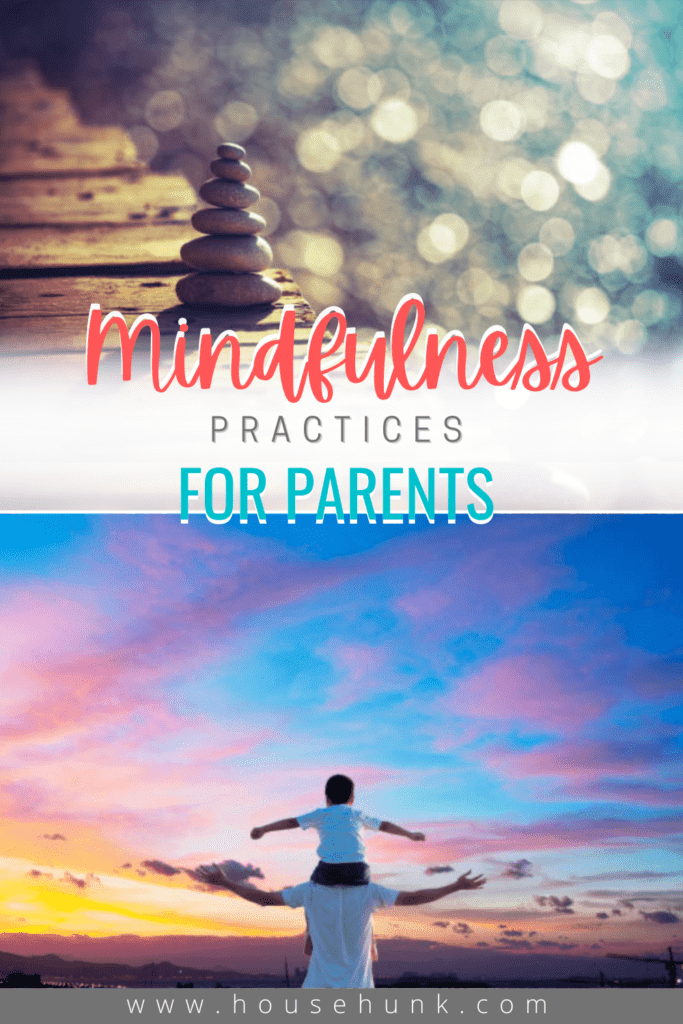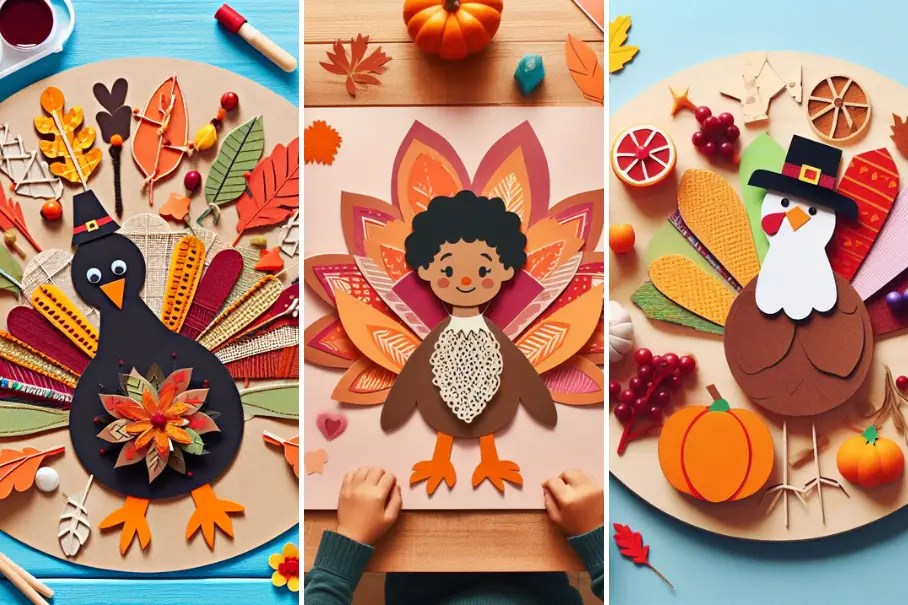This post may contain affiliate links. Please check our disclosure policy.
Parenting can be stressful. But that stress doesn’t have to consume you and your family. Here are 4 mindfulness practices that can help you.
4 Mindfulness Practices for Parents
Cheerful birthday parties. Relaxing beach vacations. Elementary school graduations. Easter brunches with kids decked out in pastels and smiling brightly. Chances are, you’ve come across your fair share of these photos while scrolling through social media. People tend to only share the best 1% of their life on social media. They are not live-streaming themselves going bonkers because there are food wrappers under their child’s bed. Or snapping like a twig, because there is sibling bickering echoing from the backseat. Or erupting like a volcano because the dinner you prepared is met with criticism, stubbornness, and eventually a hunger strike. Just because you don’t see those moments in your feed, doesn’t mean that they don’t exist. Parenting is a joy, parenting is an adventure, and parenting isn’t always perfect. But that doesn’t mean we are S.O.L. With practice, you may be able to approach these moments with a calmer mind and choose your reaction, and not by waking up like a landmine.
My dear friend, Adam Moskowitz is the founder of One Mindful. Adam has been providing mindfulness training, stress reduction counseling, and meditation retreats to parents, individuals, and organizations for almost 15 years. Adam was happy to share some evidence-based mindfulness practices that he teaches. A calmer mind can then lead to a calmer household, and a calmer household can hopefully contribute towards a calmer world…and that just sounds wonderful to me.

What is Mindfulness?
Mindfulness is like a still lake that clearly reflects the contours and texture of everything above it – the moon, the mountains, the airplane. Except it’s not a lake, it’s the natural aspect of the mind beyond our emotions, thoughts, sensations, analyzing, strategizing, liking, and disliking. Mindfulness is a momentary state, a practice, and a trait we can cultivate over time, supporting us to clearly see and inhabit the present moment with greater ease, agency, and gratitude. Mindfulness is remembering and embracing the here and now, in all its joys and sorrows.
What are the origins of mindfulness?

Why is practicing mindfulness exercises regularly a good idea? What are the benefits of mindfulness for parents?
Mindfulness may be able to support you to become more aware of your inner experience and develop a sense of “respondability” as you navigate the art of being a parent. In other words, the practice empowers us to know ourselves deeply while simultaneously helping us engage life from a vast pool of inner resources instead of being governed by our conditioned patterns of reactivity. It also may improve health and help us to enjoy all that we do.
Formal mindfulness practice (mindfulness meditation) trains us to become more mindful in daily life (informal mindfulness). To explore both facets of the practice, it’s best to practice consistently in a group with a teacher. See here for an excellent resource supporting you to learn the practice and connect with a wonderful virtual mindfulness community.
4 Introductory Mindfulness Practices for Parents
PLEASE NOTE: The practices below are extremely brief introductions to mindfulness. They do not represent a comprehensive or complete guide. They require commitment and patience, and are best learned with a teacher.

1. Touchstone Practice
Choose a “touchstone,” something you do every single day to serve as your “mindfulness bell” of sorts. Making the bed, washing the dishes, tying your shoes, whatever. Each time you engage in this activity, devote your full attention to the experience—the sounds, sights, sensations, thoughts, and emotions that are occurring throughout the experience. Approach the activity as if you do not need to “get through” it. Allow the activity to actually matter. Does it?
Touchstone practice helps us cultivate presence during a mundane moment of life, but also helps us proceed into the next moment with greater awareness and receptivity. It reveals our habit of “tumbling forward” through life—as if we’re going to get to some kind of finish line—and supports us to recognize the “less conditional” happiness that exists in the here and now. If we can be present while we make the bed, we can be present during our meals, our difficult conversations, our work, our celebratory events, and all that we do.
2. Taking in the Pleasant
Throughout the day, begin to notice and pay attention to pleasant moments or experiences. This does not mean trying to make life better, more pleasant, think positively, or find more peaceful experiences. It means to notice what’s already pleasant. When something pleasant happens, tune into the unfolding experience. Absorb what it’s like. A coffee sip, a bird sound, a kiss, anything that strikes you as pleasant. Observe it, soak it in, let it go.
When our ancestors were hunting and gathering it was much safer to notice and remember what’s “bad.” On some level, we are all vigilant and well-trained to notice everything that doesn’t look just right. Mindfulness is a kind of un-writing—a training that untrains, as we remind our ancient nervous system that things might be ok in the here and now. When we turn towards regular pleasant experiences, we begin to sense them more vividly, with greater receptivity. We acknowledge and receive the joy that life offers.
3. Knowing the Unpleasant
Throughout the day, begin to track and observe unpleasant moments or experiences. Unpleasant does not mean bad, just…unpleasant. There’s an unexpected traffic jam or whatever your unpleasant thing is. Letting go of the “problem,” investigate, on a sensory level, the unpleasant experience arising in your body, mind, and heart. What’s it like? Can you turn towards the experience with less resistance? Can you be with what’s unpleasant?
Life reliably delivers its fair share of pain. The mindfulness approach does not deny this truth. As we begin to open to the inevitable struggles of being human, we sense the strange possibility that by allowing pain, we reduce it. Kind of like holding a crying baby with care will probably be more effective than telling her/him to stop crying. By letting the waves of unpleasant experiences be what they are, we learn to suffer less.

4. Mental Noting
Whatever you’re doing, note it in your mind as you’re doing it with a single word three times. “Lifting, lifting, lifting” when you pick your child up. “Turning, turning, turning” as you steer onto your street. Note experiences too, like emotions. “Anxiety, anxiety, anxiety,” or “anger, anger, anger” when these feelings arise.
Mental noting is not a mantra, but a method to resource awareness, to “bring mindfulness online”, helping us immediately contact and embrace the reality of the present moment. When we note a difficult experience, we can contain them within the larger space of awareness, letting difficulty be difficult and letting go of the “charge.”

Adam Moskowitz is the founder of One Mindful and has been an educator for thirteen years. He is a practitioner of Vipassana (Insight) meditation and has shared mindfulness with youth and adults throughout the last decade. He is an MBSR (Mindfulness-Based Stress Reduction) teacher and has trained extensively with the Center for Mindfulness at the UMass Medical Center in Boston, Massachusetts.
Looking for some more parenting tips?







